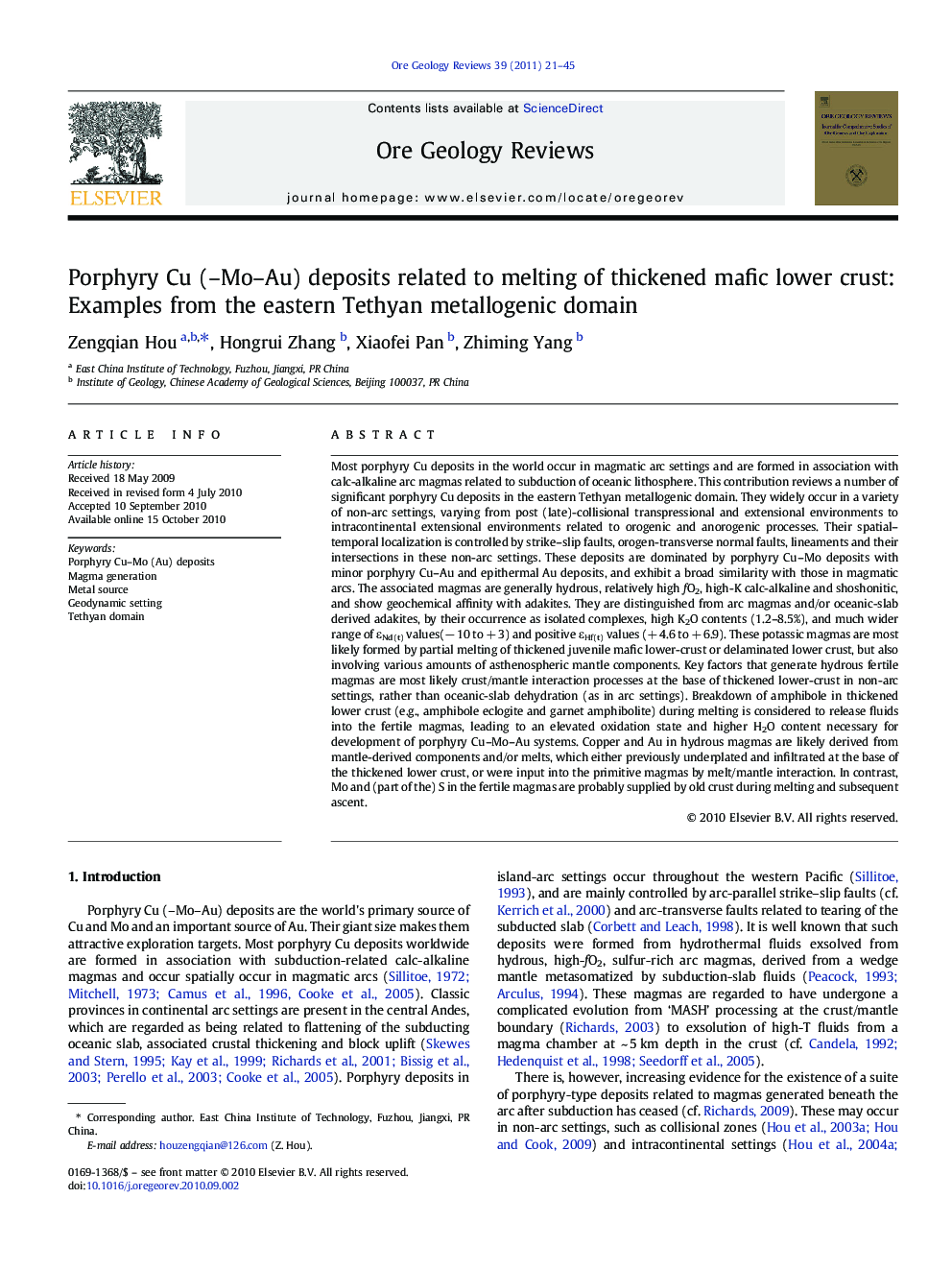| کد مقاله | کد نشریه | سال انتشار | مقاله انگلیسی | نسخه تمام متن |
|---|---|---|---|---|
| 4697781 | 1637261 | 2011 | 25 صفحه PDF | دانلود رایگان |

Most porphyry Cu deposits in the world occur in magmatic arc settings and are formed in association with calc-alkaline arc magmas related to subduction of oceanic lithosphere. This contribution reviews a number of significant porphyry Cu deposits in the eastern Tethyan metallogenic domain. They widely occur in a variety of non-arc settings, varying from post (late)-collisional transpressional and extensional environments to intracontinental extensional environments related to orogenic and anorogenic processes. Their spatial–temporal localization is controlled by strike–slip faults, orogen-transverse normal faults, lineaments and their intersections in these non-arc settings. These deposits are dominated by porphyry Cu–Mo deposits with minor porphyry Cu–Au and epithermal Au deposits, and exhibit a broad similarity with those in magmatic arcs. The associated magmas are generally hydrous, relatively high fO2, high-K calc-alkaline and shoshonitic, and show geochemical affinity with adakites. They are distinguished from arc magmas and/or oceanic-slab derived adakites, by their occurrence as isolated complexes, high K2O contents (1.2–8.5%), and much wider range of εNd(t) values(− 10 to + 3) and positive εHf(t) values (+ 4.6 to + 6.9). These potassic magmas are most likely formed by partial melting of thickened juvenile mafic lower-crust or delaminated lower crust, but also involving various amounts of asthenospheric mantle components. Key factors that generate hydrous fertile magmas are most likely crust/mantle interaction processes at the base of thickened lower-crust in non-arc settings, rather than oceanic-slab dehydration (as in arc settings). Breakdown of amphibole in thickened lower crust (e.g., amphibole eclogite and garnet amphibolite) during melting is considered to release fluids into the fertile magmas, leading to an elevated oxidation state and higher H2O content necessary for development of porphyry Cu–Mo–Au systems. Copper and Au in hydrous magmas are likely derived from mantle-derived components and/or melts, which either previously underplated and infiltrated at the base of the thickened lower crust, or were input into the primitive magmas by melt/mantle interaction. In contrast, Mo and (part of the) S in the fertile magmas are probably supplied by old crust during melting and subsequent ascent.
Research Highlights
► Propose a synthesis model of porphyry deposits in non-arc setting by detailed review.
► Crust/mantle interaction is reagrded to be key process to generate fertile adakitic porphyries.
► Cu, Au was derived from mantle-derived components, but Mo was provided by old crust.
► Breakdown of amphibole in magma source is regared to have resulted in high fO2 and H2O content of magma.
Journal: Ore Geology Reviews - Volume 39, Issues 1–2, February 2011, Pages 21–45